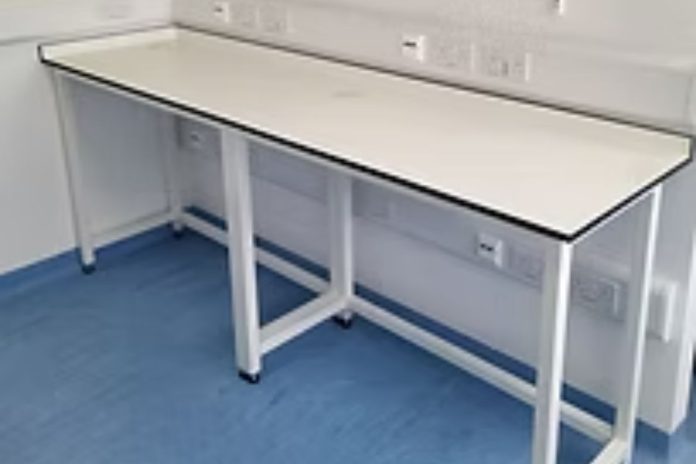Stepping into a science lab often feels like solving a high-stakes puzzle. Without proper organization, tasks that should take minutes can stretch into hours, experiments lose precision, and deadlines become daunting. But when everything has its place, the lab transforms from a chaotic workspace into a well-oiled hub of efficiency, accuracy, and collaboration. From personal experience, I’ve witnessed how thoughtful organization doesn’t just streamline work—it fosters better results, clearer communication, and even sparks creative breakthroughs. Let’s delve deeper into why an organized lab is not just helpful but absolutely essential.
The Role of Organization in Scientific Success
Effective organization in a science lab isn’t a luxury—it’s a necessity. It’s not about obsessing over every detail; it’s about building systems that enable seamless workflows, precise experiments, and smooth collaboration. Whether managing a high school chemistry lab or conducting cutting-edge research, organization acts as the backbone of success. Without it, even the most brilliant scientists waste time, risk errors, and face teamwork challenges. Let’s explore how organization impacts the core aspects of lab work.
Enhancing Efficiency
An organized lab is a productive lab. Imagine searching for a reagent, recalibrating equipment, or deciphering someone else’s poorly labeled samples. Chaos wastes valuable time—time better spent analyzing results, advancing experiments, or brainstorming your next breakthrough.
Here’s how organization improves efficiency:
- Streamlined workflows: When tools and supplies have designated spots, retrieval becomes second nature.
- Faster experiments: Clear labeling and categorized storage eliminate interruptions.
- Reduced downtime: Fewer distractions from misplaced items or disorganized protocols keep your focus sharp.
Efficiency fosters creativity. When clutter doesn’t bog you down, your energy can focus on the science itself.
Improving Accuracy
Science thrives on precision. Even minor errors can derail entire experiments, producing unreliable results or forcing a restart. Organization isn’t just about neatness—it’s about maintaining control, reducing errors, and ensuring reliability.
Here’s how an organized lab safeguards accuracy:
- Proper sample management: Organized storage prevents mishandling or mix-ups.
- Standardized protocols: Consistent labeling and documentation minimize human error.
- Minimized contamination risk: A clean workspace lowers cross-contamination risks.
In a lab, every detail counts. Reliable systems provide the confidence needed for dependable results.
Facilitating Collaboration
Science is rarely a solo effort. Research teams rely on collaboration to tackle complex problems, but a lack of organization can hinder teamwork. Miscommunication, redundant work, or tension often arises in chaotic environments.
Here’s how organization simplifies collaboration:
- Shared resources: Clearly labeled equipment and supplies reduce confusion and disputes.
- Transparent documentation: Organized records ensure everyone stays aligned, whether tracking progress or troubleshooting.
- Defined roles: Clear task allocation prevents overlap and streamlines workflows.
When labs run smoothly, teams build trust and focus on solving challenges together.
From Chaos to Clarity: A Personal Experience
In my early days in the lab, I faced an experiment gone awry because of a lost reagent. The chemical cabinet was disorganized, with unlabeled bottles and misplaced tools. The result? Hours wasted, missed deadlines, and unreliable outcomes. That experience led me to spearhead a reorganization effort. We started with clear labels, grouped common items, and implemented regular inventory checks. Within months, experiments ran seamlessly, data quality improved, and team morale soared.
One change revolutionized our approach: investing in high-quality lab furniture and storage solutions. Partnering with providers like Lab Tables gave us access to durable, purpose-built workstations that maximized efficiency. A well-designed workspace transformed the lab into a productive, orderly environment that encouraged creativity and precision.
Strategies for Effective Lab Organization
Creating an organized lab goes beyond aesthetics—it’s the cornerstone of productivity. Here are proven strategies for better lab management:
1. Optimize Physical Layout
- Group related equipment to reduce movement.
- Create zones for preparation, reaction, analysis, and storage.
- Use stackable racks, bins, and vertical shelving to maximize space.
2. Leverage Digital Tools
- Inventory systems like Quartzy simplify tracking reagents and supplies.
- Electronic lab notebooks (ELNs) like Benchling standardize record-keeping.
- Scheduling apps like Google Calendar prevent instrument conflicts.
3. Implement Checklists and Maintenance Routines
- Daily checklists for cleaning and organizing keep the lab functional.
- Weekly inventory checks ensure supplies don’t run out.
- Regular calibration schedules maintain equipment accuracy.
The Long-term Benefits of Lab Organization
Beyond saving time and reducing errors, an organized lab builds your professional reputation and fosters a collaborative culture:
- Credibility: A tidy lab reflects your commitment to precision and professionalism.
- Team harmony: Clear roles and shared responsibility enhance morale.
- Attractive workspace: An organized lab attracts collaborators and funding opportunities.
By investing in durable, customizable lab furniture from companies like Lab Tables, you create a space that supports both present efficiency and future growth.
Conclusion
An organized lab is more than just a neat workspace—it’s the foundation for scientific excellence. It drives efficiency, improves accuracy, and fosters collaboration, setting the stage for groundbreaking discoveries. Take the first step today: declutter one area, label your samples, or consider upgrading your workspace with tailored solutions like those offered by Lab Tables. Small changes can lead to extraordinary results in your research.








